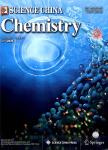Recyclable polymer-based nano-hydrous manganese dioxide for highly efficient Tl(I) removal from water
Recyclable polymer-based nano-hydrous manganese dioxide for highly efficient Tl(I) removal from water作者机构:State Key Laboratory of Pollution Control and Resource Reuse School of the Environment Nanjing University National Engineering Center for Organic Pollution Control and Resource Reuse (Suzhou Division) Suzhou High-Tech Institute of Nanjing University South China Institute of Environmental ScienceMinistry of Environmental Protection
出 版 物:《Science China Chemistry》 (中国科学(化学英文版))
年 卷 期:2014年第57卷第5期
页 面:763-771页
核心收录:
学科分类:083002[工学-环境工程] 0830[工学-环境科学与工程(可授工学、理学、农学学位)] 08[工学]
基 金:financially supported by the National Natural Science Foundation of China(51078179) Natural Science Foundation of Jiangsu Province(BK2012017/2011016) State Key Scientific Project for Water Pollution Control and Treatment(2012ZX07206003) Program for New Century Excellent Talents in University of China(NCET10-0490)
主 题:manganese dioxide nanocomposite thallium water treatment
摘 要:TI(I) in water even at a trace level is fatal to human beings and the ecosystem. Here we fabricated a new polymer-supported nanocomposite (HMO-001) for efficient TI(I) removal by encapsulating nanosized hydrous manganese dioxide (HMO) within a polystyrene cation exchanger (D-001). The resultant HMO-001 exhibited more preferable removal of TI(I) than D-001 and IRC-748, an iminodiacetic chelating polymer, particularly in the presence of competing Ca(II) ions at greater levels in solution. Such preference was ascribed to the Donnan membrane effect caused by D-001 as well as the specific interaction between TI(I) and HMO. The adsorbed TI(I) was partially oxidized into insoluble TI(III) by HMO at acidic pH, while negligible oxidation was observed at circumneutral pH. The exhausted HMO-001 was amenable to efficient regeneration by binary NaOH-NaC10 solution for at least 10-cycle batch runs without any significant capacity loss. Fixed-bed column test of Tl(I)-contained indus- trial effluent and natural water further validated that TI(I) retention on HMO-001 resulted in a conspicuous concentration drop from 1.3 mg/L to a value lower than 0.14 mg/L (maximum concentration level for industrial effluent regulated by US EPA) and from 1-4 μg/L to a value lower than 0.1 μg/L (drinking water standard regulated by China Health Ministry), respectively.



